Tetraacetylethylenediamine
Synonym(s):N,N′-Ethylenebis(diacetamide);TAED
- CAS NO.:10543-57-4
- Empirical Formula: C10H16N2O4
- Molecular Weight: 228.24
- MDL number: MFCD00014967
- EINECS: 234-123-8
- SAFETY DATA SHEET (SDS)
- Update Date: 2025-12-23 21:30:31
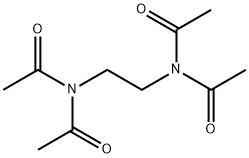
What is Tetraacetylethylenediamine?
Chemical properties
Tetraacetylethylenediamine is off-white to beige granular powder
The Uses of Tetraacetylethylenediamine
Tetraacetylethylenediamine (TAED) is a bleaching activator which is mainly used in detergents and additives for laundry washing and dishwashing. Typical concentrations of TAED range between 1.4% and 13% in these products. A small amount of the produced TAED is also used in bleaching of paper, textiles and for the generation of Peracetic acid.
Peroxide bleach activator for household detergents, paper pulp.
The Uses of Tetraacetylethylenediamine
N,N,N',N'-Tetraacetylethylenediamine is used as a peroxide bleach activator in household detergents and for paper pulp. It also serves as an important component of laundry detergents and bleaches, where it is used as an activator for active oxygen bleaching agents such as sodium perborate, sodium percarbonate, sodium perphosphate and sodium persulfate. It reacts with the perhydroxyl anion HO2- in the presence of aqueous alkaline solution to prepare triacetylethylenediamine and diacetylethylenediamine with the release of peracetic acid, which is a fast acting bleaching agent.
Preparation
Tetraacetylethylenediamine (TAED) is produced in a two stage process from ethylenediamine (ED) and acetic anhydride (Ac2O). ED is first diacetylated to DAED. In the second step DAED is subsequently converted with Ac2O via TriAED into TAED (Clariant, 1999). TAED is crystallized out of the reaction mixture, filtered, washed and dried, and if necessary also granulated. The raw materials used occur almost quantitatively in the product. Byproducts are not formed.
TAED was prepared by acetylation of diacetylethylenediamine (DAED) with acetic anhydride in a 5 L reactor coupled with a packed distillation column, 2.5 cm in inside diameter and 1 m in length. The reaction temperature was set at 135 °C and the reflux ratio at 6. The molar ratio of acetic anhydride to DAED was varied from 3 to 5. A TAED yield as high as 80% was obtained, higher by 15% than in the absence of distillation.
Definition
ChEBI: Tetraacetylethylenediamine is a dicarboximide.
Health Hazard
TAED is of very low toxicity by all exposure routes examined. Up to 2 g/kg BW there is no acute toxicity. TAED is practically non-irritating to skin and eyes and there is no evidence of a sensitizing potential by skin contact. The only effect after repeated oral and dermal dosing was reversible centrilobular hypertrophy in the liver at high doses due to the induction of metabolizing enzymes. In a 90-day whole body inhalation study no adverse effects in the rat lung, respiratory tract or nasal mucosa were observed. Biokinetic data showed that TAED is rapidly absorbed from the rat intestine and largely metabolized via diacetylation to TriAED and DAED which are excreted in the urine.
Properties of Tetraacetylethylenediamine
| Melting point: | 149-154 °C |
| Boiling point: | 140 °C (1.5002 mmHg) |
| Density | 0.9 |
| refractive index | 1.4550 (estimate) |
| Flash point: | 140 °C |
| form | Granular Powder |
| pka | -1.23±0.70(Predicted) |
| color | Off-white to beige |
| Water Solubility | slightly soluble |
| Merck | 14,9028 |
| BRN | 1795711 |
| CAS DataBase Reference | 10543-57-4(CAS DataBase Reference) |
| NIST Chemistry Reference | N,n,n',n'-tetraacetylethylenediamine(10543-57-4) |
| EPA Substance Registry System | Tetraacetylethylenediamine (10543-57-4) |
Safety information for Tetraacetylethylenediamine
| Signal word | Warning |
| Pictogram(s) |
 Exclamation Mark Irritant GHS07 |
| GHS Hazard Statements |
H315:Skin corrosion/irritation H319:Serious eye damage/eye irritation |
| Precautionary Statement Codes |
P280:Wear protective gloves/protective clothing/eye protection/face protection. P302+P352:IF ON SKIN: wash with plenty of soap and water. P305+P351+P338:IF IN EYES: Rinse cautiously with water for several minutes. Remove contact lenses, if present and easy to do. Continuerinsing. P332+P313:IF SKIN irritation occurs: Get medical advice/attention. P337+P313:IF eye irritation persists: Get medical advice/attention. |
Computed Descriptors for Tetraacetylethylenediamine
| InChIKey | BGRWYDHXPHLNKA-UHFFFAOYSA-N |
Tetraacetylethylenediamine manufacturer
Chemie Trade
Antares Chem Private Limited
Triveni Interchem Private Limited (Group Of Triveni Chemicals)
New Products
Indole Methyl Resin tert-butyl 9-methoxy-3-azaspiro[5.5]undecane-3-carboxylate Boc-His(Boc)-OH 2-CTC Resin 4-Chloro-7-tosy1-7Hpyrrolo[2,3-d]pyrimidine 5,7-Dibromo-1H-indole 2,5-dichloro-N-hydroxy-4,6-dimethylpyridine-3-carboximidamide 2,2-Dimethoxy-7-azaspiro[3.5]nonane hydrochloride 4-chloromethyl-5-methyl-1,3-dioxol-2-one (DMDO-Cl) R-2-BENZYLOXY PROPIONIC ACID 1,1’-CARBONYLDIIMIDAZOLE 1,1’-CARBONYLDI (1,2-4 TRIAZOLE) N-METHYL INDAZOLE-3-CARBOXYLIC ACID 4-((2-hydroxyethyl)thio)benzoic acid 1-(TERT-BUTOXYCARBONYL)-2-PYRROLIDINONE Methyl 6-methylnicotinate 3-Pyridineacrylic acid tert-Butyl carbazate TETRAHYDRO-2H-PYRAN-3-OL 2-((4-morpholinophenylamino) (methylthio) methylene) malononitrile 3-(4-morpholinophenylamino)-5-amino-1H-pyrazole-4-carbonitrile 2,4-dihydroxybenzaldehyde 1,3-Diethyl-1,3-Diphenylurea Methyl 2-methylquinoline-6-carboxylateRelated products of tetrahydrofuran
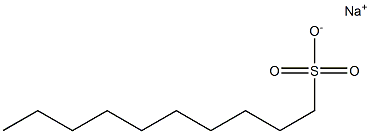



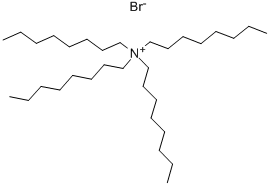



You may like
-
 N,N,N',N'-Tetraacetylethylenediamine, 90% CAS 10543-57-4View Details
N,N,N',N'-Tetraacetylethylenediamine, 90% CAS 10543-57-4View Details
10543-57-4 -
 Tetraacetylethylenediamine 95% CAS 10543-57-4View Details
Tetraacetylethylenediamine 95% CAS 10543-57-4View Details
10543-57-4 -
 Tetra Acetyl Ethylene Diamine CASView Details
Tetra Acetyl Ethylene Diamine CASView Details -
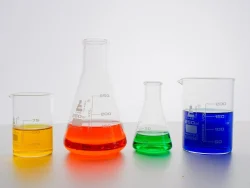 Tetraacetylethylenediamine CAS: 10543-57-4View Details
Tetraacetylethylenediamine CAS: 10543-57-4View Details
10543-57-4 -
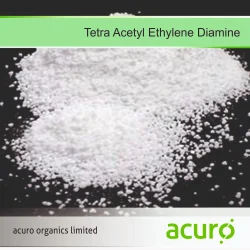 Powder Tetra Acetyl Ethylene Diamine, For IndustrialView Details
Powder Tetra Acetyl Ethylene Diamine, For IndustrialView Details
10543-57-4 -
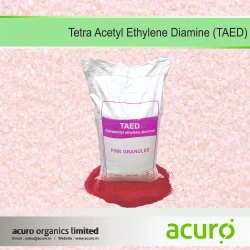 Tetra Acetyl Ethylene Diamine (TAED)View Details
Tetra Acetyl Ethylene Diamine (TAED)View Details
10543-57-4 -
 TetraacetylethylenediamineView Details
TetraacetylethylenediamineView Details
10543-57-4 -
 Powder Tetra Acetyl Ethylene Diamine, Grade Standard: Technical Grade, for IndustrialView Details
Powder Tetra Acetyl Ethylene Diamine, Grade Standard: Technical Grade, for IndustrialView Details
10543-57-4
